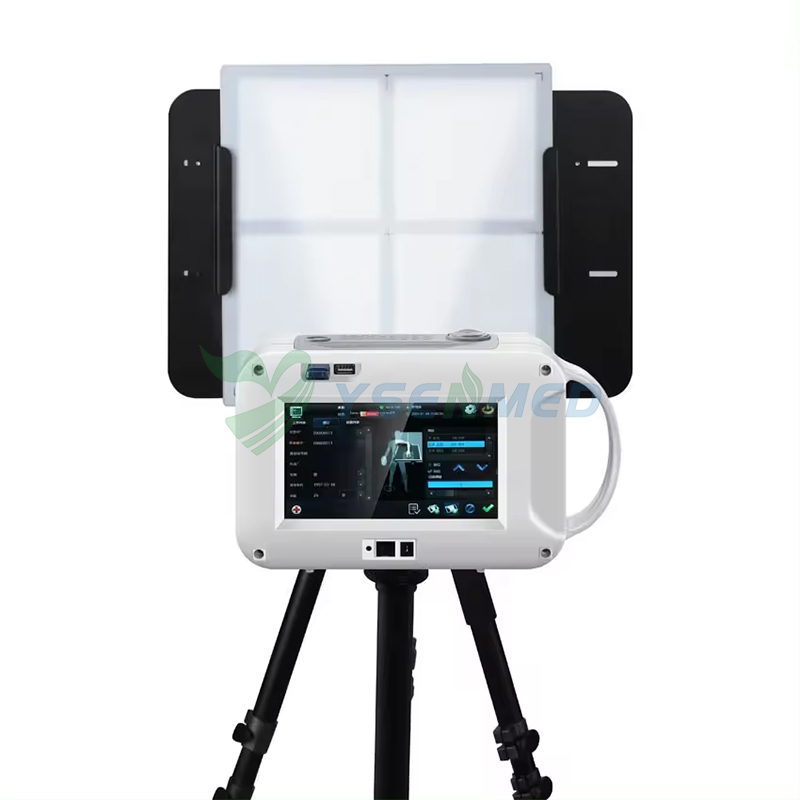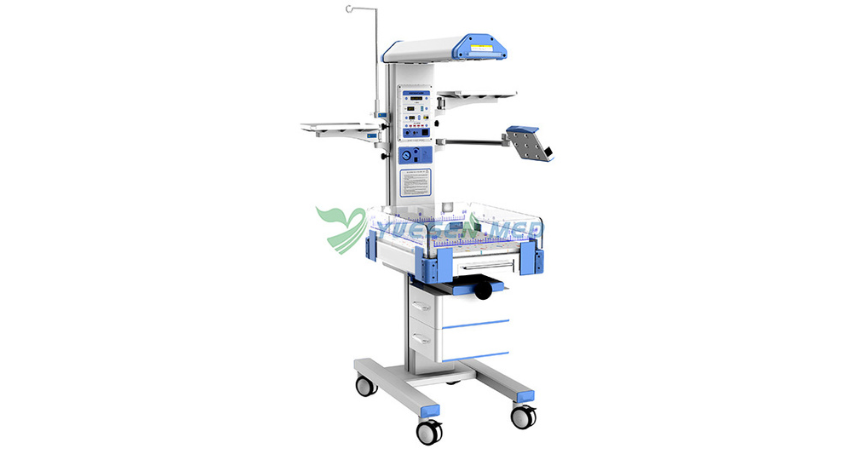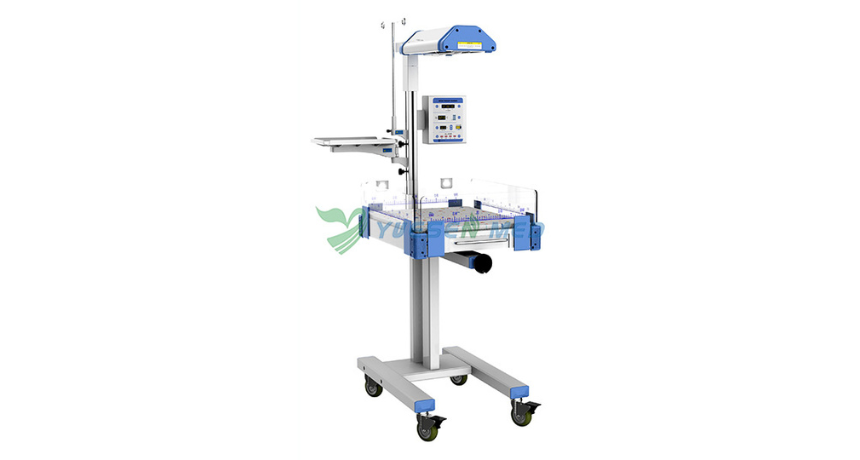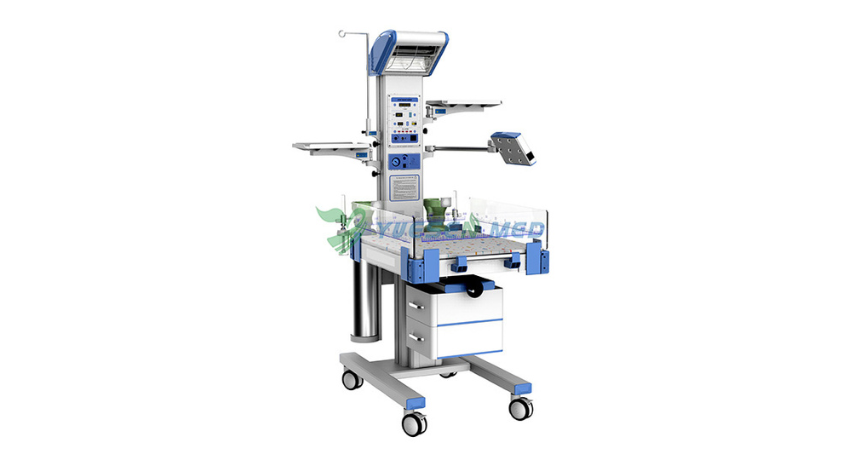Hot Products
YSX500D 50kW DR system set up and put into service in Cambodia.
YSENMED YSX500D 50kW digital x-ray system has been successfully set up and put into service in a hospital in Cambodia.
YSX056-PE serving as a vehicle-mounted x-ray in the Philippines
YSX056-PE 5.6kW portable x-ray unit has been adapted to fit on a truck, to provide mobile x-ray examination service for remote communities in the Philippines.
X Ray Machine To Zimbabwe
x ray machine, 50KW x ray machine
Microscope To Malawi
Achromatic objectives: 4X、10X、40X(S), 100X(S、Oil) Wide field eyepiece: WF10X(WF16X for option) Eyepiece head: Sliding binocular head inclined at 45° Stage: Double layer mechanical stage size 140X140mm, moving range 75X45mm Focusing: Coaxial coarse and
Hand Held X-Ray Machines: Convenience Meets Cutting-Edge Technology
Views : 1397
Update time : 2024-08-30 11:58:00
In today's fast-paced world, convenience and technology go hand in hand, especially in the medical field. One innovation that has revolutionized diagnostic imaging is the hand-held X-ray machine. Imagine having the power to capture high-quality images without the bulk of traditional machines. This article will explore the ins and outs of hand-held X-ray machines, their benefits, applications, and the technology behind them. Let's dive in!

What Are Hand Held X-Ray Machines?
Hand-held X-ray machines are compact, portable devices designed to produce X-ray images. Unlike traditional X-ray machines that are stationary and require a dedicated space, these devices can be easily maneuvered and used in various settings. This portability makes them a game-changer in medical diagnostics.
The Rise of Portable Imaging
A Brief History
The journey of X-ray technology began in the late 19th century with Wilhelm Conrad Roentgen's discovery. Over the years, traditional X-ray machines evolved, but the need for portability remained unmet until recent advancements in technology paved the way for hand-held devices.
Why the Shift?
The healthcare industry is constantly evolving. With the increasing demand for immediate diagnostic results, hand-held X-ray machines emerged as a practical solution. Their ability to provide quick, on-site imaging is invaluable, especially in emergency situations.
Key Features of Hand Held X-Ray Machines
Portability
One of the standout features of hand-held X-ray machines is their lightweight design. Weighing just a few pounds, these devices can be easily transported from one location to another, making them ideal for fieldwork or emergency response.
User-Friendly Interface
Modern hand-held X-ray machines come equipped with intuitive controls and touchscreens, allowing healthcare professionals to operate them with minimal training. This accessibility ensures that even less experienced users can effectively capture diagnostic images.
High-Quality Imaging
Don't let their size fool you! These machines produce high-resolution images comparable to those from traditional X-ray systems. Advanced imaging technology ensures that healthcare providers can make accurate diagnoses based on clear visuals.
Applications in Healthcare
Emergency Medicine
In emergency situations, time is of the essence. Hand-held X-ray machines enable quick assessment of injuries, such as fractures or foreign objects, without the need to transport patients to a radiology department.
Dental Practices
Dentists are increasingly adopting hand-held X-ray machines for their convenience. These devices allow for quick dental imaging, facilitating immediate treatment decisions and enhancing patient comfort.
Veterinary Medicine
Veterinarians also benefit from portable X-ray technology. Hand-held machines enable quick diagnostics for animals, especially in emergency cases where transporting the animal can be stressful.
Home Healthcare
As more healthcare services move into the home setting, hand-held X-ray machines offer a practical solution for in-home diagnostics. This technology allows healthcare providers to assess conditions without requiring patients to visit a clinic.
The Technology Behind Hand Held X-Ray Machines
Digital Imaging
Most hand-held X-ray machines utilize digital imaging technology. This means that images are captured electronically, allowing for instant viewing and analysis. Digital images can also be easily stored and shared, enhancing collaboration among healthcare professionals.
Battery-Powered Convenience
Many of these devices are battery-operated, which further enhances their portability. Healthcare providers can use them in remote locations without worrying about finding a power source.
Advanced Safety Features
Safety is paramount in radiology. Hand-held X-ray machines come equipped with advanced safety features, including automatic exposure control and shielding, to minimize radiation exposure to both patients and operators.
Benefits of Hand Held X-Ray Machines
Enhanced Patient Comfort
Patients often feel anxious about undergoing X-rays, especially in unfamiliar settings. Hand-held machines allow for imaging in a more comfortable environment, reducing stress and improving the overall experience.
Faster Diagnosis
With the ability to perform X-rays on-site, healthcare providers can make quicker decisions. This rapid diagnosis can significantly impact treatment outcomes, particularly in emergency situations.
Cost-Effectiveness
While the initial investment in hand-held X-ray technology may be higher, the long-term savings are substantial. Reduced need for transportation, quicker diagnosis, and enhanced patient throughput contribute to overall cost savings.
Challenges and Considerations
Training Requirements
Although hand-held X-ray machines are user-friendly, proper training is essential. Healthcare professionals must understand the equipment and safety protocols to ensure effective and safe use.
Regulatory Compliance
Like all medical devices, hand-held X-ray machines must comply with strict regulatory standards. Healthcare facilities must ensure that they are using approved devices and following all guidelines.
Image Quality Concerns
While technology has advanced significantly, some users may express concerns about image quality compared to traditional machines. However, ongoing improvements continue to enhance the capabilities of these devices.
Future Trends in Hand Held X-Ray Technology
Integration with AI
The future of hand-held X-ray machines may include artificial intelligence (AI) integration. AI can assist in image analysis, helping healthcare providers identify abnormalities more quickly and accurately.
Improved Portability
As technology advances, we can expect even lighter and more compact designs. Future hand-held X-ray machines may become even more portable, making them accessible in a wider range of settings.
Expanding Applications
With ongoing research and development, the applications of hand-held X-ray machines will likely expand beyond current uses. We may see new innovations that enhance their functionality in various medical fields.
Conclusion
Hand-held X-ray machines represent a significant leap forward in diagnostic imaging. Their convenience, portability, and advanced technology make them an invaluable tool in modern healthcare. As we continue to embrace innovation, these devices will play an increasingly important role in providing timely and accurate diagnostics. Whether in emergency rooms, dental offices, or veterinary clinics, the fusion of convenience and cutting-edge technology is transforming the way we approach patient care. As we look to the future, it's clear that hand-held X-ray machines are here to stay, making healthcare more efficient and accessible than ever before.
FAQ
Are hand-held X-ray machines safe for patients?
Yes, hand-held X-ray machines are designed with patient safety in mind. They incorporate advanced safety features to minimize radiation exposure. Operators are trained to use these devices correctly, ensuring that both patients and healthcare providers are protected during the imaging process. However, as with any medical procedure involving radiation, the benefits must be weighed against the risks.
How do hand-held X-ray machines compare to traditional X-ray machines in terms of image quality?
While traditional X-ray machines have long been the standard, modern hand-held X-ray machines produce high-resolution images that are often comparable in quality. Advances in digital imaging technology have significantly improved the clarity and detail of images captured by these portable devices, making them suitable for accurate diagnosis in various medical fields.
Can hand-held X-ray machines be used in emergency situations?
Absolutely! One of the primary benefits of hand-held X-ray machines is their portability, making them ideal for emergency situations. They can be quickly deployed in hospitals, ambulances, or even at the scene of an accident, allowing healthcare providers to assess injuries and make rapid decisions about treatment.

What Are Hand Held X-Ray Machines?
Hand-held X-ray machines are compact, portable devices designed to produce X-ray images. Unlike traditional X-ray machines that are stationary and require a dedicated space, these devices can be easily maneuvered and used in various settings. This portability makes them a game-changer in medical diagnostics.
The Rise of Portable Imaging
A Brief History
The journey of X-ray technology began in the late 19th century with Wilhelm Conrad Roentgen's discovery. Over the years, traditional X-ray machines evolved, but the need for portability remained unmet until recent advancements in technology paved the way for hand-held devices.
Why the Shift?
The healthcare industry is constantly evolving. With the increasing demand for immediate diagnostic results, hand-held X-ray machines emerged as a practical solution. Their ability to provide quick, on-site imaging is invaluable, especially in emergency situations.
Key Features of Hand Held X-Ray Machines
Portability
One of the standout features of hand-held X-ray machines is their lightweight design. Weighing just a few pounds, these devices can be easily transported from one location to another, making them ideal for fieldwork or emergency response.
User-Friendly Interface
Modern hand-held X-ray machines come equipped with intuitive controls and touchscreens, allowing healthcare professionals to operate them with minimal training. This accessibility ensures that even less experienced users can effectively capture diagnostic images.
High-Quality Imaging
Don't let their size fool you! These machines produce high-resolution images comparable to those from traditional X-ray systems. Advanced imaging technology ensures that healthcare providers can make accurate diagnoses based on clear visuals.
Applications in Healthcare
Emergency Medicine
In emergency situations, time is of the essence. Hand-held X-ray machines enable quick assessment of injuries, such as fractures or foreign objects, without the need to transport patients to a radiology department.
Dental Practices
Dentists are increasingly adopting hand-held X-ray machines for their convenience. These devices allow for quick dental imaging, facilitating immediate treatment decisions and enhancing patient comfort.
Veterinary Medicine
Veterinarians also benefit from portable X-ray technology. Hand-held machines enable quick diagnostics for animals, especially in emergency cases where transporting the animal can be stressful.
Home Healthcare
As more healthcare services move into the home setting, hand-held X-ray machines offer a practical solution for in-home diagnostics. This technology allows healthcare providers to assess conditions without requiring patients to visit a clinic.
The Technology Behind Hand Held X-Ray Machines
Digital Imaging
Most hand-held X-ray machines utilize digital imaging technology. This means that images are captured electronically, allowing for instant viewing and analysis. Digital images can also be easily stored and shared, enhancing collaboration among healthcare professionals.
Battery-Powered Convenience
Many of these devices are battery-operated, which further enhances their portability. Healthcare providers can use them in remote locations without worrying about finding a power source.
Advanced Safety Features
Safety is paramount in radiology. Hand-held X-ray machines come equipped with advanced safety features, including automatic exposure control and shielding, to minimize radiation exposure to both patients and operators.
Benefits of Hand Held X-Ray Machines
Enhanced Patient Comfort
Patients often feel anxious about undergoing X-rays, especially in unfamiliar settings. Hand-held machines allow for imaging in a more comfortable environment, reducing stress and improving the overall experience.
Faster Diagnosis
With the ability to perform X-rays on-site, healthcare providers can make quicker decisions. This rapid diagnosis can significantly impact treatment outcomes, particularly in emergency situations.
Cost-Effectiveness
While the initial investment in hand-held X-ray technology may be higher, the long-term savings are substantial. Reduced need for transportation, quicker diagnosis, and enhanced patient throughput contribute to overall cost savings.
Challenges and Considerations
Training Requirements
Although hand-held X-ray machines are user-friendly, proper training is essential. Healthcare professionals must understand the equipment and safety protocols to ensure effective and safe use.
Regulatory Compliance
Like all medical devices, hand-held X-ray machines must comply with strict regulatory standards. Healthcare facilities must ensure that they are using approved devices and following all guidelines.
Image Quality Concerns
While technology has advanced significantly, some users may express concerns about image quality compared to traditional machines. However, ongoing improvements continue to enhance the capabilities of these devices.
Future Trends in Hand Held X-Ray Technology
Integration with AI
The future of hand-held X-ray machines may include artificial intelligence (AI) integration. AI can assist in image analysis, helping healthcare providers identify abnormalities more quickly and accurately.
Improved Portability
As technology advances, we can expect even lighter and more compact designs. Future hand-held X-ray machines may become even more portable, making them accessible in a wider range of settings.
Expanding Applications
With ongoing research and development, the applications of hand-held X-ray machines will likely expand beyond current uses. We may see new innovations that enhance their functionality in various medical fields.
Conclusion
Hand-held X-ray machines represent a significant leap forward in diagnostic imaging. Their convenience, portability, and advanced technology make them an invaluable tool in modern healthcare. As we continue to embrace innovation, these devices will play an increasingly important role in providing timely and accurate diagnostics. Whether in emergency rooms, dental offices, or veterinary clinics, the fusion of convenience and cutting-edge technology is transforming the way we approach patient care. As we look to the future, it's clear that hand-held X-ray machines are here to stay, making healthcare more efficient and accessible than ever before.
FAQ
Are hand-held X-ray machines safe for patients?
Yes, hand-held X-ray machines are designed with patient safety in mind. They incorporate advanced safety features to minimize radiation exposure. Operators are trained to use these devices correctly, ensuring that both patients and healthcare providers are protected during the imaging process. However, as with any medical procedure involving radiation, the benefits must be weighed against the risks.
How do hand-held X-ray machines compare to traditional X-ray machines in terms of image quality?
While traditional X-ray machines have long been the standard, modern hand-held X-ray machines produce high-resolution images that are often comparable in quality. Advances in digital imaging technology have significantly improved the clarity and detail of images captured by these portable devices, making them suitable for accurate diagnosis in various medical fields.
Can hand-held X-ray machines be used in emergency situations?
Absolutely! One of the primary benefits of hand-held X-ray machines is their portability, making them ideal for emergency situations. They can be quickly deployed in hospitals, ambulances, or even at the scene of an accident, allowing healthcare providers to assess injuries and make rapid decisions about treatment.
Related News
Read More >>
 What is the Difference Between Radiant Warmer and Phototherapy?
What is the Difference Between Radiant Warmer and Phototherapy?
Apr .19.2025
Radiant warmers and phototherapy are crucial in neonatal care, but they serve different purposes. Let's dive into the nitty-gritty of these two techniques and explore how they differ, and when each is appropriate.
 YSX056-PE portable digital x-ray unit set up in the Philippines
YSX056-PE portable digital x-ray unit set up in the Philippines
Apr .19.2025
YSX056-PE portable digital x-ray unit has been set up in a hospital in the Philippines and the good quality images please the doctors.
 Is an Infant Radiant Warmer Good for Babies' Health?
Is an Infant Radiant Warmer Good for Babies' Health?
Apr .13.2025
What exactly is the infant radiant warmer, and how does it contribute to a baby's health? Let's dive into this topic and explore the ins and outs of infant radiant warmers.
 What is an Infant Radiant Warmer?
What is an Infant Radiant Warmer?
Apr .12.2025
One of the unsung heroes in neonatal care is the infant radiant warmer. But what exactly is it? Let's dive into the world of infant care and explore the ins and outs of this vital device.



